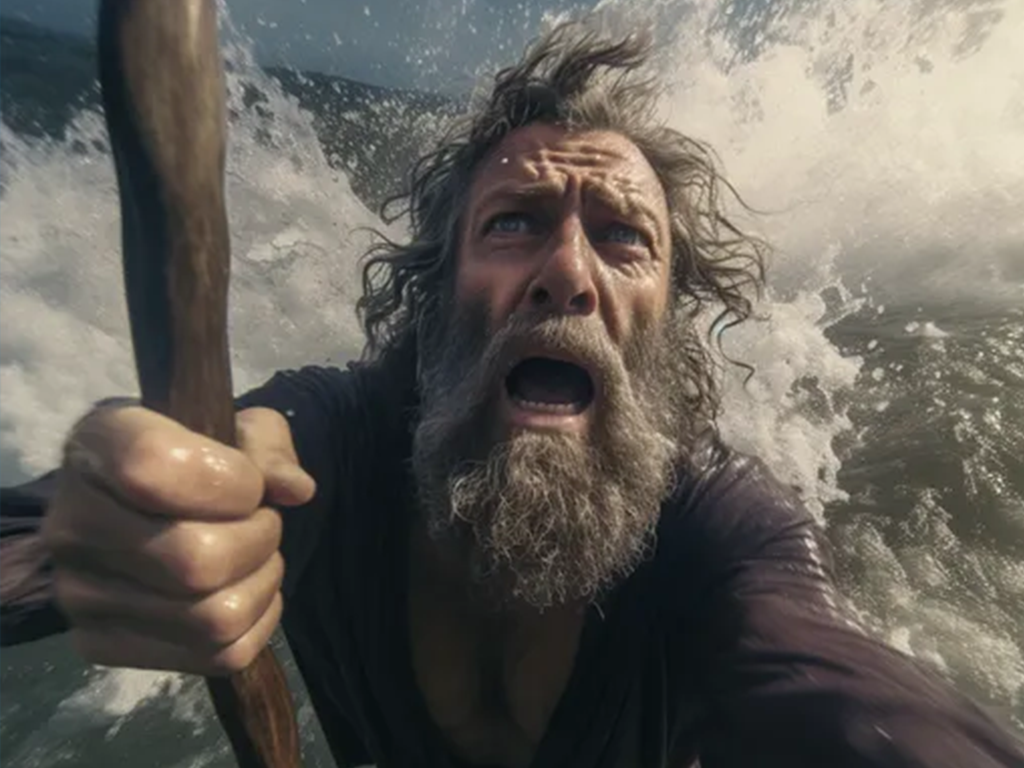Science
AI Creates Genuine Art, But Does It Pose National Security Implications?
IA’s artistry is so very realistic that you can no longer trust any photo or video you see — unless you know and trust the source.

In case you don’t recognize the name Marc Andreessen, you may just be too young to remember when his name was commonly-known at the start of the World Wide Web (“www”). Andreessen was the famed co-author of Mosaic, the earliest real web browser with a GUI (graphical user interface) and the progenitor to all other modern web browsers. Not too long thereafter, he co-founded Netscape, one of the first widely-used browsers. Netscape was hugely popular in the mid 1990’s, and later publicly released its source code and formed the Mozilla Organization. If you’ve got a few years on you, maybe this will provide a memory:

Elon Musk has said, “I never originally intended to start a company. I tried to get a job at Netscape after graduating from Penn. Marc Andreessen is a friend of mine but they didn’t respond to my resume that I mailed in. … I guess if they had just given me a job, I would have worked at Netscape.”
But this is not a “walk down memory lane” to remind you of Netscape. Rather, Mark Andreessen has spoken some very cautionary words about AI (Artificial Intelligence), and with his professional history his words deserve our attention.
MARC ANDREESSEN: “AI has been a censorship machine from Day One. It is 100% intentional. This is how you end up with black George Washington at Google. These companies were born woke. They were born to be censorship machines.”
“Censorship of AI is one thousand to one million times more dangerous than social media. AI will be the control layer for how everything works in the future. So if that AI is woke/biased/censored, you’re in a hyper-Orwellian China style social credit nightmare.”
“The way this happens is because the AI has been trained to lie.”
Andreessen says he has it on good authority that the Biden Administration wants AI to be the exclusive domain of the U.S. goverment. But does it pose national security threats or have national security consequences?:
AI has tremendous potention for good. But it can also be used for evil.
We can’t overlook AI’s ability to write computer code (that would ordinarily take a skilled coder days or weeks to write), or to organize data, or to do a myriad of other very useful things. But in this post, we are looking at its ability to create totally realistic photographs, videos, and art, seamingly real photographs, videos, and art, and the downside of that ability, the creation of false propaganda.
You can easily watch a very believable video of a world leader saying things that in reality were never said. This can be used to manipulate polulations. Would government control over AI and the regulation of AI, save us from such manipulation, or will the government itself become the chief propagandist?
But first, on the good side, Elon Musk shows us how AI can bring old works of art back to life:
But AI has no controls. When you look at the images below, they appear quite real, but you know that they cannot be believed. But as to the ones that are believable, how would you know if they are true or IA-generated? In the future, whenever you see any pictures or videos, how will you know if they are real or not?
Here’s yet another video that looks remarkable real, except that it is so totally fanciful that you know it’s an AI production. But the images are so well done, they do look real, and it is only your discernment that lets you know this is not real. But what if it weren’t so fanciful, what if it were in the realm of belief, what if one of the characters in this production were in a setting that seemed real and was saying words which sounded like him or her and were within the realm of possibility. Could you easily be deceived? Could this provide the greatest propaganda tool ever?
The woman shown below decided she would like to be seen with Elon Musk, so she created a totally bogus, but entirely realistic, photograph of the two of them. They do make a beautiful couple, but it is all AI make-believe.
There are some photos, such as the one below, that no matter how well done, you just know are not real:
But how can you, looking at a picure that appears real, or watching and listening to a video that appears real, actually have any level of confidence in what you are seeing?
AI can also make some beautiful pictures in mere moments that are as good as any artist can do with weeks or months of effort:
Just look at the quality of the artistry:
But the point of all of this is, you can never look at any photo or video again and believe it — unless you know for certain the source of the image and how they got it. In other words, if you saw a photo of Trump or Putin in a major newspaper, you could probably (but not necessarily) believe it. But if you saw a photo of Trump and Putin in a close embrasse on social media, you had better put up your credulity meter. We live in a world where many things we used to see and trust, we can no longer trust nor verify.












